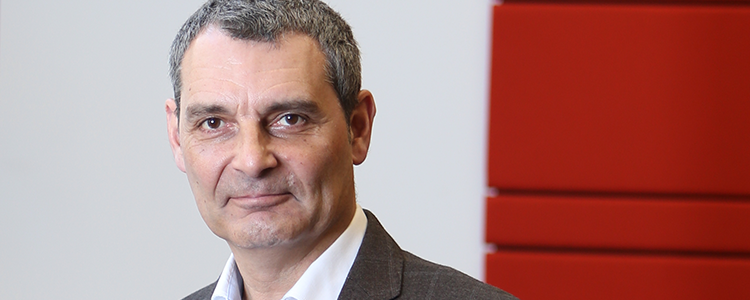From a distance

From a distance
As we reach the 100th issue of NESCurrent we catch up with Christopher Wroath, Director of NES Technology Service (NTS). Christopher featured in the first edition back in 2014 when he was newly in post. As part of our 100th issue he shares some reflections on the past 9 years, ponders some of the present priorities and takes a look ahead at the exciting path of future technology.
Looking Back
“Over the past 9 years the most striking change in terms of technology within NES is in the way we work. From a distance.
“The deployment of cloud-based services (e.g Office 365) meant that when the pandemic hit, non-frontline and non-acute services like NES were very quickly able to transition to a distance working model.
“Of course lived experience is not that remarkably different from 9 years ago, for example the way in which we create digital assets and what we use them for (e.g. email, PowerPoints, web content) is a much as it was 9 years ago. But it’s the way that we access, store and deliver these assets that has radically changed. So for me the biggest changes are in distance and time. We can work seamlessly at distance and we can store and use assets for increasingly longer periods of time.
Challenges around governance and infrastructure
“We still need to work on the taking down of organisational barriers to the movement and access to information. A great deal of work is being done by our information governance and assurance teams in creating a greater recognition that data & information can and should move across through organisational boundaries.
“And this approach is based on the technology that NES deploys means we can now plan and deliver taking the NHS workforce data from e:ESS, the core NHS Scotland system of record for this data, and move it into a single, contiguous set of information that will be usable across the service - very exciting and important in moving to next generation ways of working.
“NTS is very focussed on moving data from existing systems into our cloud technology to make it accessible, more standardised, easier to consume, consistent and always available.
“Digital Front Door is an example of where we are doing this for primary care data. Creating a single summary care record for residents of Scotland and then making that accessible to them through an application in 24/25 – exciting stuff. It’s the creation of that single data source that is the most important.
Future
“There is of course a lot of discussion and expectation around Artificial Intelligence (AI). To fully realise the anticipated benefits from AI our data needs to be modelled differently, collected differently. And when I say “data” I mean all our digital assets, all the files and documents and spreadsheets and annual leave records, all the information we create directly and indirectly as we go about our work. AI is essentially about speed, speed to create new documents and records, speed to diagnose and recommend treatment. Speed to give new capability to each one of us.
"The NES Transformation Programme and the Corporate Improvement Programme within it will drive the discovery, shaping and resources need to bring about this change in the way we create and store information, drive change in our business processes and shape the information to make us more efficient now and ready for the AI future. I urge everyone to engage with the Transformation Programme and bring your experience and knowledge to bear on the shaping of NES’s future”.
Rewind to Christopher’s 2014 interview for the first edition of NESC.
December, 20 2023
